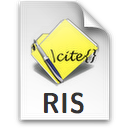

| ORIGINAL ARTICLE |
 |
 |
Background: Diabetes mellitus is a non-communicable disease that is also referred to as a lifestyle disorder that requires modifications in diet, exercise, and behavior along with medication. As per the Indian traditional system of medicine, many medicinal plants have been used to manage various health disorders, including diabetes mellitus. Therapeutic plants are an important source of medicine, and various active compounds were isolated from the plants. The present research work was designed to evaluate the impact of multiherbal formulations on blood sugar and body weight in albino rats. Three different formulations were prepared from five plant extracts (Allium sativum, Azadirachta indica, Phyllanthus emblica, Tamarindus indica, and Zingiber officinale). After daily administration of multiherbal formulations at 300 mg/kg b.wt. and the standard drug (Glibenclamide) at a dose of 5 mg/kg b.wt. for 15, 30, and 45 days, respectively. Blood samples were collected from each rat and analyzed according to standard techniques (parameters), and biochemical parameters, viz., glycogen, protein, and lipid profile (serum cholesterol, triglyceride, HDL, LDL, and VLDL) of rats, were measured.
Results: There was a significant (p<0.01) decrease in the glycogen and protein levels and a significant (p<0.01) increase in the lipid profile (except HDL) in diabetic rats when compared with the normal control. However, treatment of alloxan-injected rats with three different formulations significantly (p<0.01) increased the glycogen, and protein levels and significantly (p<0.01) decreased the lipid profile (except HDL) as compared to the standard group and normal control group.
Conclusion: The present study made us conclude that among the three different formulations, formulation 2 (Allium sativum, Azadirachta indica, and Zingiber officinale) was more effective as compared to the other two formulations, exhibited an antihyperglycemic effect, and also possessed beneficial effects in diabetic rats.
Key words: antidiabetic properties, medicinal plants, formulations, diabetic rats

